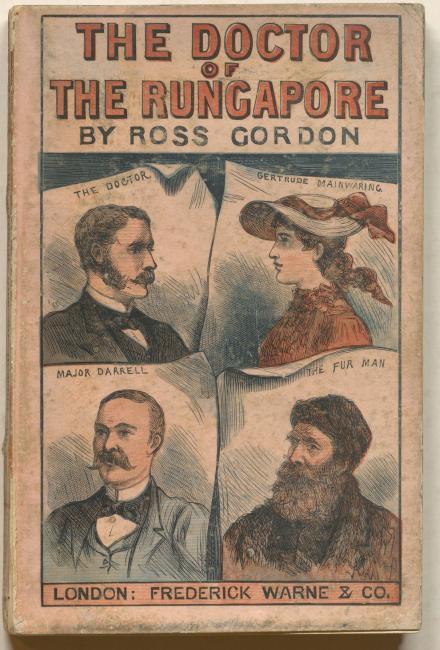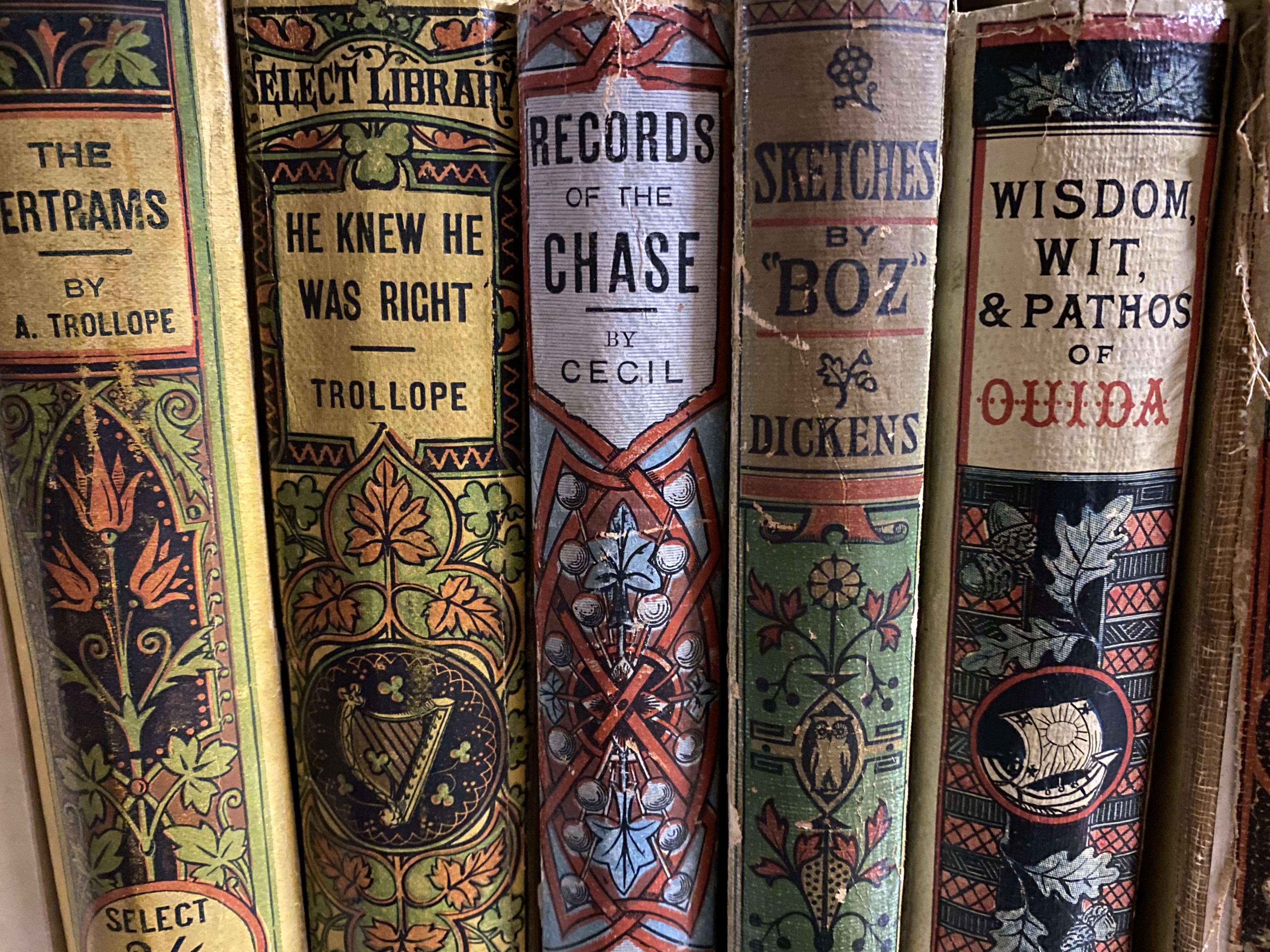Yellowback books, named for their yellow covers, originated in England during the latter half of the 19th century. These books were often referred to as “railway novels” because they were frequently sold at train stations when early publishers like W.H Smith and George Routledge opened railway bookstalls. Rail stations were the perfect place to sell such books as travel by train was a staple for Victorians.
Yellowbacks sold for relatively low prices since they were inexpensive to produce. The books featured advertisements on the back cover that helped to cover production costs. This feature was essential to maintaining their low purchase price; one could purchase a yellowback for a modest price of 1-2 shillings, making it the most inexpensive book at the time.
These books were also characterized by cheap boards covered in glazed paper, and low quality paper that turned yellow with age. Edmund Evans, a wood engraver, invented a new way to print the covers that used one block for an outline and two blocks to apply colour. Prominent illustrators were hired to design the distinct and striking covers of this genre. Despite their short shelf life, they were produced in vast numbers because of their low production value, availability, and popular appeal.
Yellowback books became an ideal venue for the publication of popular literature with plots featuring conventional stories of crime, suspense, and romance. They would also chronicle moral categories, public ordeals, and crude stereotypes, creating an entertaining reading experience. It was not until the end of the 19th century that women writers and readers began to dominate the genre, with a focus on female virtue and sensational subject matter. Popular novelists like Maria Louise Ramé (1839-1908) and Mary Elizabeth Brandon (1835-1915) were noted for their contributions to this trend. Yellowback books were also noted for reprinting famous and “respectable” literature which included the very popular works of Shakespeare and Dickens. These stories were reprinted to continue capitalizing from their success in a new market.
Today, yellowbacks are considered collectible items and assets to rare book collections as they have not survived in great numbers. The inexpensive materials used in production were not meant for durability and longevity, so many copies that have survived are not in good condition. Yellowbacks were not of interest to collectors due to their low production quality until book collectors Michael Sadleir (1888-1957) and John Carter (1905-1975) recognized their historical significance in 1934. These books are also representative of the industrial revolution and introduction of modern travel in Victorian era England.
 Ross Gordon. The Doctor of the Rungapore. London: F. Warne, [1882] (Fisher call #: yel 00280)
Ross Gordon. The Doctor of the Rungapore. London: F. Warne, [1882] (Fisher call #: yel 00280)
 Published in 1882 by Frederick Warne & Co. for the Warne readable readers series, The Doctor of the Rungapore by Gordon Ross is an original story and well-preserved example of the yellowback genre. The boards have some signs of yellowing, but not nearly as extreme as other examples in the collection. The cover features a colourful title and eye-catching art. This cover image is an example of Edmund Evans’ wood block print style using two colours, orange and blue, with black outlines and shading. The front board and first page are plastered in an advertisement for Frederick Warne & Co.’s “Companion Library” which states the price for all listed books as two shillings. The back of the book features another two pages of advertisements for the publisher, listing many books in categories such as English literature and cookbooks all listed at varying low prices. The back board features a full-page advertisement for The Century Magazine also published by Frederick Warne & Co.
Published in 1882 by Frederick Warne & Co. for the Warne readable readers series, The Doctor of the Rungapore by Gordon Ross is an original story and well-preserved example of the yellowback genre. The boards have some signs of yellowing, but not nearly as extreme as other examples in the collection. The cover features a colourful title and eye-catching art. This cover image is an example of Edmund Evans’ wood block print style using two colours, orange and blue, with black outlines and shading. The front board and first page are plastered in an advertisement for Frederick Warne & Co.’s “Companion Library” which states the price for all listed books as two shillings. The back of the book features another two pages of advertisements for the publisher, listing many books in categories such as English literature and cookbooks all listed at varying low prices. The back board features a full-page advertisement for The Century Magazine also published by Frederick Warne & Co.
- Lauren Ulbricht, Graduate student, Faculty of Information
Sources
Barchas, Janine. The Lost Books of Jane Austen. Baltimore: Johns Hopkins University Press, 2019.
Davies, Richard. “Cheap, Eye-Catching & Victorian: Discover Yellowbacks.” Abebooks.com.
Gilcher, Edwin. “Victorian Yellowbacks.” English Literature in Transition, 1880-1920 37, no. 3 (1994): 385-387.
James, Elizabeth. “Aspects of the Victorian Book: Yellowbacks.” The British Library.
Mitchell, Sally, ed. Victorian Britain: An Encyclopedia. New York: Routledge, 2011.
Morrison, Kevin A., ed. Companion to Victorian Popular Fiction. North Carolina: McFarland & Company, 2018.
